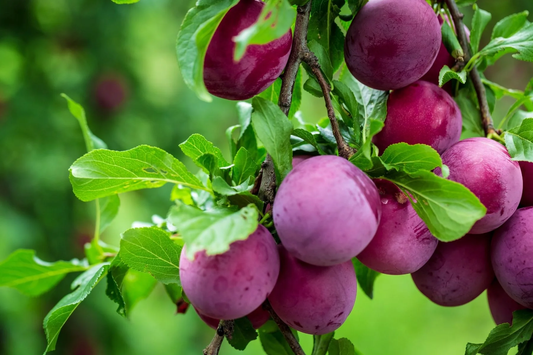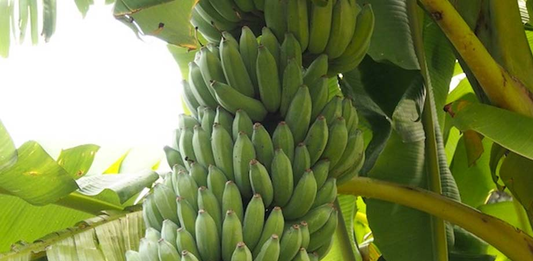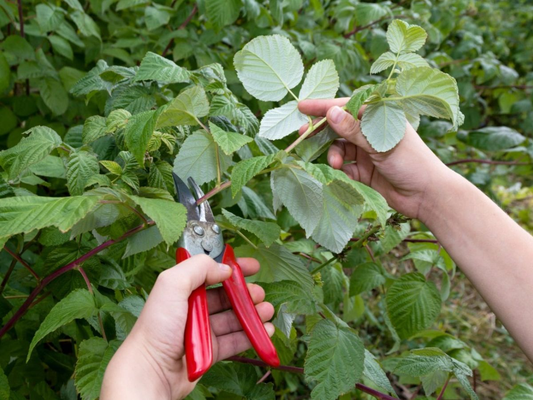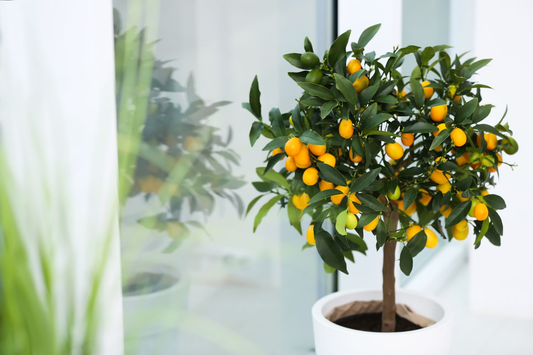Low-Maintenance Houseplants
Share
- 1. Introduction
- 2. What Are Low-Maintenance Houseplants?
- 3. Benefits of Choosing Low-Maintenance Houseplants
- 4. Factors to Consider When Choosing a Low-Maintenance Houseplant
- 5. Top Low-Maintenance Houseplants
- 6. How to Care for Low-Maintenance Houseplants
- 7. Common Problems with Low-Maintenance Houseplants and How to Fix Them
- 8. Best Low-Maintenance Houseplants for Different Spaces
- 9. DIY Low-Maintenance Plant Arrangements
- 10. Conclusion
- 11. Frequently Asked Questions
1. Introduction
Low-maintenance houseplants are becoming increasingly popular, especially among homeowners and apartment dwellers who want to add a touch of greenery to their living spaces without dedicating a lot of time and effort to plant care. These plants are ideal for people with busy schedules or those new to gardening who may not have the experience or knowledge to care for more demanding plants.
Here’s why low-maintenance houseplants are so appealing:
- Ease of Care: Many low-maintenance houseplants require minimal watering, light, and care. This makes them perfect for those who do not have a green thumb or the time to regularly tend to their plants.
- Resilience: These plants are typically hardier and more adaptable to a variety of conditions, making them perfect for less-than-ideal environments. Whether it's low light, dry air, or fluctuating temperatures, these plants can survive and thrive.
- Aesthetic Benefits: Aside from their low-maintenance nature, these plants also contribute to creating a calming, aesthetically pleasing atmosphere. Adding greenery to your home can enhance the decor, improve air quality, and boost overall mood and productivity.
As we continue to navigate busy, modern lifestyles, the demand for plants that are easy to care for yet still beautiful has risen dramatically. Low-maintenance houseplants offer the perfect solution for those looking to introduce more nature into their lives with minimal hassle.

2. What Are Low-Maintenance Houseplants?
Low-maintenance houseplants are plants that require minimal effort and attention to thrive in your home. These plants are ideal for those who want to enjoy the beauty of greenery without investing a lot of time in their care. Whether you're a busy professional, a beginner gardener, or someone who simply enjoys a stress-free environment, low-maintenance plants are a perfect choice.
Here are some characteristics that define low-maintenance houseplants:
- Tolerance to Neglect: These plants can tolerate periods of neglect, such as irregular watering or lack of regular attention. They are resilient and can bounce back after being slightly neglected.
- Minimal Watering Needs: Low-maintenance plants generally don't require frequent watering. Many of them are drought-tolerant and can survive for weeks without water, making them perfect for forgetful gardeners.
- Ability to Thrive in Various Lighting Conditions: These plants are adaptable and can grow in a range of light conditions, from low light to bright indirect sunlight. Some can even tolerate artificial lighting, making them ideal for offices or rooms without natural light.
- Resilience to Temperature Changes: Many low-maintenance plants can withstand fluctuating temperatures, making them versatile in different indoor environments.
- Low Pest and Disease Sensitivity: Low-maintenance plants often have fewer issues with pests or diseases compared to more sensitive varieties, reducing the need for constant monitoring or treatment.
While low-maintenance houseplants are easy to care for, high-maintenance houseplants require more attention and specific conditions to thrive. Here are some key differences:
- Watering: High-maintenance plants often need more frequent watering, and overwatering or underwatering can be detrimental. Low-maintenance plants, on the other hand, can go longer without watering.
- Light Requirements: High-maintenance plants may require specific light conditions, such as direct sunlight or precise light intensity, while low-maintenance plants can thrive in various lighting environments.
- Temperature Sensitivity: High-maintenance plants may be more sensitive to temperature changes, requiring specific room temperatures or humidity levels. Low-maintenance plants are generally more adaptable to a range of conditions.
- Fertilization and Pruning: High-maintenance plants often require regular fertilization and pruning to maintain healthy growth, while low-maintenance plants are less demanding in these areas.
3. Benefits of Choosing Low-Maintenance Houseplants
Low-maintenance houseplants offer more than just a beautiful aesthetic; they provide a range of benefits that make them a smart choice for any home. Whether you’re looking to save time, money, or improve your overall well-being, these plants can significantly enhance your life in many ways. Let’s explore some of the key advantages of choosing low-maintenance houseplants:
- Time-saving: One of the most significant benefits of low-maintenance houseplants is the amount of time they save. For busy individuals who may not have hours to spend on plant care, these plants are a perfect solution. They don’t require frequent watering, regular pruning, or specialized treatments, freeing up time for other activities. Some low-maintenance plants can even go weeks without attention.
Low-maintenance plants are also ideal for people with hectic schedules, frequent travel, or those new to gardening, offering a stress-free experience. Whether you have a demanding job or are simply overwhelmed by daily responsibilities, these plants will add beauty to your space without adding additional stress.
- Financial Benefits: Low-maintenance plants can reduce the overall costs of gardening. Since they require less care and fewer supplies, you won’t need to buy as many fertilizers, plant foods, or soil amendments. Additionally, since these plants are more resilient, you’ll spend less on replacing damaged or dying plants due to improper care.
Furthermore, low-maintenance houseplants can reduce your spending on water bills, as many of them are drought-tolerant and need less frequent watering. In the long run, these plants save money while still adding value and charm to your home.
- Stress Relief and Mental Health Benefits: Houseplants have been shown to have significant psychological benefits, and low-maintenance plants are no exception. Caring for plants can provide a sense of accomplishment and boost mood, even if the plants don’t require constant attention.
Studies have found that indoor plants help reduce stress, anxiety, and depression, contributing to an overall improvement in mental health. Their presence in your home can create a calming atmosphere, making your living space feel more peaceful and relaxing. Low-maintenance plants provide all these benefits without the added pressure of complex care routines.
- Improvement in Air Quality and Overall Indoor Environment: Many low-maintenance houseplants are known for their ability to improve indoor air quality. Plants like peace lilies, spider plants, and snake plants can filter toxins from the air, creating a healthier and more breathable indoor environment.

4. Factors to Consider When Choosing a Low-Maintenance Houseplant
When selecting a low-maintenance houseplant, it's important to consider several factors that can impact the plant's ability to thrive in your home. While low-maintenance plants are generally easier to care for, each plant has specific needs that should be met to ensure it remains healthy and vibrant. Here are some key factors to consider:
- Light Requirements: Different plants thrive under different lighting conditions. Understanding the light needs of a plant will help ensure that it grows well in your home. Here are some general categories of light requirements:
- Low light: Plants that thrive in low light are ideal for rooms without windows or areas that receive minimal sunlight. Examples include the snake plant and pothos.
- Medium light: These plants require indirect light but not necessarily direct sunlight. Common options include the ZZ plant and the peace lily.
- Bright light: These plants require plenty of natural light and may need to be placed near windows or in sun-filled areas. Examples include succulents and spider plants.
By selecting a plant that suits your available lighting conditions, you can ensure that your plant will thrive with minimal effort on your part.
- Watering Needs: One of the key features of low-maintenance plants is their ability to thrive with infrequent watering. Look for plants that are drought-tolerant and can go without water for extended periods. Here are some plants that do well with minimal watering:
- Succulents and Cacti: These plants store water in their leaves and are perfect for individuals who tend to forget regular watering.
- Snake Plant: This resilient plant can go weeks without water, making it ideal for those who need a forgiving plant.
- Aloe Vera: Known for its healing properties, aloe vera requires very little watering and thrives in dry conditions.
When choosing plants with low watering needs, be sure to consider their specific moisture tolerance to avoid overwatering, which can be harmful.
- Humidity Preferences: Many houseplants require high humidity to thrive, but low-maintenance plants are often more adaptable to varying humidity levels. If you live in a dry climate or have air conditioning, opt for plants that do not require high humidity:
- Snake Plant: It can tolerate a wide range of humidity levels and still grow well.
- Aloe Vera: This plant thrives in dry air and is perfect for environments with lower humidity.
Choosing plants that are not picky about humidity can save you the effort of maintaining high indoor moisture levels.
- Temperature Tolerance: Most low-maintenance plants are adaptable to a range of temperatures. However, some plants may have specific temperature needs. Consider plants that can tolerate a variety of indoor temperature fluctuations:
- ZZ Plant: This plant is known for its tolerance to both heat and cold, making it perfect for fluctuating indoor temperatures.
- Spider Plant: Spider plants are hardy and do well in a wide range of temperatures, making them great for many indoor environments.
By selecting plants that can adapt to your home's temperature conditions, you can minimize the need for adjusting the environment for the plant's comfort.
- Size and Growth: Consider how large the plant will grow when selecting a low-maintenance houseplant. Some plants remain small and compact, while others can grow quite large over time. Make sure to choose a plant that fits the space available:
- Compact plants: If you’re short on space, consider smaller plants like the snake plant or pothos that stay relatively small.
- Larger plants: If you have more room to work with, consider larger plants like the rubber plant or the peace lily, which can grow into statement pieces in your home.

5. Top Low-Maintenance Houseplants
When it comes to low-maintenance houseplants, there are several excellent options that require minimal attention while still providing a variety of benefits. Below, we’ll highlight some of the best low-maintenance houseplants, their care requirements, and the unique benefits they offer:
- Snake Plant (Sansevieria):
Light: Low to medium light
Water: Infrequent watering; drought-tolerant
Benefits: Snake plants are famous for their resilience and air-purifying qualities. They can tolerate neglect, thrive in various light conditions, and are one of the easiest houseplants to care for. They are also known to filter toxins from the air, making them a great addition to any home or office.
- ZZ Plant (Zamioculcas zamiifolia):
Light: Low to bright indirect light
Water: Occasional watering
Benefits: The ZZ plant is perfect for those who want a low-maintenance, resilient houseplant. It can survive in dry conditions and can tolerate neglect. This plant is also known for its attractive glossy foliage and its ability to thrive in low-light environments, making it ideal for offices or darker rooms.
- Pothos (Epipremnum aureum):
Light: Low to bright indirect light
Water: Infrequent watering
Benefits: Pothos is a fast-growing and adaptable plant that can thrive in various lighting conditions. Its attractive trailing vines can be used as hanging plants or allowed to climb. Pothos is also highly forgiving when it comes to watering, making it a great choice for beginners or those with busy lifestyles.
- Spider Plant (Chlorophytum comosum):
Light: Moderate to bright indirect light
Water: Moderate watering needs
Benefits: Spider plants are not only low-maintenance but also air-purifying. They are ideal for households with pets or children because they are non-toxic. Their unique green and white striped leaves make them an attractive addition to any space, and they are easy to propagate, meaning you can grow even more plants from the parent plant.
- Aloe Vera:
Light: Bright light
Water: Minimal watering
Benefits: Aloe Vera is a versatile and low-maintenance plant. Not only is it incredibly easy to care for, but it also offers medicinal benefits. The gel from the plant’s leaves is commonly used to treat burns and cuts. Aloe Vera requires minimal watering and prefers bright light, making it a perfect plant for a sunny windowsill or kitchen countertop.
- Peace Lily (Spathiphyllum):
Light: Low to bright indirect light
Water: Regular watering (but resilient to dryness)
Benefits: The Peace Lily is known for its air-purifying abilities and elegant white flowers. It is also one of the few houseplants that can tolerate low light and irregular watering schedules. It’s an excellent choice for homes or offices with minimal natural light, and it can add a touch of beauty with its graceful blooms.
Table 1: Comparison of Low-Maintenance Houseplants
| Plant Name | Light Needs | Watering Needs | Size Growth | Benefits |
|---|---|---|---|---|
| Snake Plant | Low to Medium | Infrequent | Medium | Air purification, tolerant of neglect |
| ZZ Plant | Low to Bright | Occasional | Medium to Large | Drought-tolerant, can survive dry conditions |
| Pothos | Low to Bright | Infrequent | Small to Large | Fast-growing, adaptable, attractive vines |
| Spider Plant | Moderate to Bright | Moderate | Small to Medium | Air-purifying, low-maintenance |
| Aloe Vera | Bright | Minimal | Small to Medium | Easy care, medicinal properties |
| Peace Lily | Low to Bright | Regular | Medium | Air purification, attractive flowers |
6. How to Care for Low-Maintenance Houseplants
Caring for low-maintenance houseplants is simple, yet following a few basic guidelines will ensure your plants thrive. These plants typically require less attention than more demanding species, but it’s important to understand their specific needs to maintain healthy growth. Here are some essential care tips:
1. Watering Tips
- When to Water: A key aspect of caring for low-maintenance houseplants is understanding when to water them. Many of these plants are drought-tolerant and prefer to dry out between waterings. Check the soil with your finger to see if it's dry about 1–2 inches deep before watering.
- Avoid Overwatering: Overwatering is one of the most common mistakes. Ensure the pot has proper drainage to allow excess water to escape. Plants like the Snake Plant and ZZ Plant are particularly prone to root rot if kept too wet.
- Watering Frequency: Depending on the plant, you may only need to water once every 1–2 weeks. In winter, plants generally need less water, as they enter a dormant phase.
2. Lighting
- Understanding Light Requirements: Although low-maintenance plants can tolerate low light, providing them with the proper amount of light is crucial for healthy growth. Snake Plants and ZZ Plants thrive in low to medium light, while Aloe Vera and Peace Lilies prefer brighter light conditions.
- Best Practices: To find the best spot for your plants, observe the natural lighting in your home. For plants that need indirect light, place them near windows with sheer curtains. Avoid direct sunlight for plants like the ZZ Plant, as it can scorch their leaves.
- Artificial Lighting: If your home has limited natural light, consider using grow lights to supplement. Many low-maintenance houseplants can thrive with artificial light, as long as it mimics sunlight.
3. Soil and Pots
- Choosing the Right Soil: Low-maintenance plants generally prefer well-draining soil. A general-purpose potting mix works well for most plants, but adding perlite or sand can improve drainage, especially for plants like the Snake Plant or Aloe Vera.
- Pot Selection: Choose pots with drainage holes to avoid waterlogging. For larger plants, ensure the pot is large enough to accommodate their roots. Consider a slightly larger pot when repotting to allow for future growth.
- Soil Maintenance: Every 1–2 years, it’s a good idea to refresh the soil to maintain its structure and nutrients.
4. Fertilization
- When to Fertilize: While low-maintenance plants don’t require frequent fertilization, you can give them a boost during the growing season (spring and summer). Use a balanced, diluted fertilizer every 4–6 weeks.
- Types of Fertilizer: Liquid houseplant fertilizers are easy to apply, but slow-release fertilizers can also be used for longer-lasting nutrients.
- Over-fertilizing: Avoid over-fertilizing, as this can cause harm. If you notice yellowing leaves or stunted growth, you may be overfeeding your plants.
5. Repotting and Pruning
- When to Repot: Most low-maintenance plants grow slowly, so you don’t need to repot them frequently. Repot your plants when their roots outgrow the pot, or once every 1–2 years.
- Repotting Tips: Choose a pot that is 1–2 inches larger in diameter than the current one. Ensure the plant’s root system isn’t too cramped, but avoid choosing a pot that’s too large, as it can cause water retention issues.
- Pruning: Pruning is typically only needed for plants that are growing too large or have dead or damaged leaves. Remove dead foliage or trim back long stems to encourage new growth and maintain the plant’s shape.

7. Common Problems with Low-Maintenance Houseplants and How to Fix Them
Low-maintenance houseplants are generally resilient, but like any plant, they can encounter problems. By understanding common issues and their solutions, you can keep your plants healthy and thriving. Below are some typical problems and how to fix them:
1. Overwatering/Underwatering
-
Overwatering:
- Signs: Yellowing leaves, soft or mushy roots, and soil that remains soggy.
- Remedies: Ensure your plant's pot has drainage holes. Let the soil dry out before watering again, and adjust your watering schedule accordingly. Consider using a moisture meter to check the soil’s moisture level.
-
Underwatering:
- Signs: Wilting, dry and crispy leaves, or a general lack of vitality.
- Remedies: Increase the frequency of watering, ensuring that water reaches the root system. Water thoroughly until water drains from the bottom of the pot.
2. Pests
-
Common Pests:
- Spider mites: Small, red or yellowish dots on leaves, fine webbing.
- Aphids: Tiny, green or black insects on leaves and stems, sticky residue.
- Mealybugs: Cotton-like clumps on plant stems or under leaves.
-
Identifying and Controlling Pests:
- Inspect your plants regularly for any signs of pests, especially under leaves and along stems.
- Use insecticidal soap or a homemade solution of water and dish soap to wash off pests. For spider mites, a mixture of rubbing alcohol and water can also be effective.
- For more severe infestations, consider isolating the affected plant to prevent spreading and using neem oil or horticultural oil treatments.
3. Leaf Yellowing and Brown Tips
-
Causes of Yellowing Leaves:
- Overwatering or underwatering.
- Low light conditions or too much direct sunlight.
- Excessive fertilization or lack of nutrients.
-
How to Fix:
- For yellow leaves, adjust your watering habits. Ensure the plant is getting the right amount of light.
- Fertilize with a balanced, diluted fertilizer if necessary, but avoid overfertilizing.
- If only a few leaves are yellowing, remove them to allow the plant to focus on healthy growth.
-
Brown Tips:
- Causes: Low humidity, inconsistent watering, or fertilizer burn.
- Solution: Increase humidity with a humidifier or pebble tray. Avoid letting the soil dry out completely and water consistently.
4. Leggy Growth
- What is Leggy Growth? Leggy growth occurs when a plant’s stems stretch out, with leaves spaced far apart, often due to insufficient light.
-
How to Fix:
- Move the plant to a brighter location, or supplement with artificial lighting if necessary.
- Prune the plant to encourage bushier growth and remove any weak, elongated stems.
5. Root Rot
- Causes of Root Rot: Root rot typically occurs when the plant is overwatered, or the pot doesn’t have adequate drainage. It causes roots to become mushy and discolored.
-
How to Prevent Root Rot:
- Ensure your plant’s pot has proper drainage holes.
- Water the plant only when the top 1–2 inches of soil is dry.
-
Treatment for Root Rot:
- Remove the plant from its pot and inspect the roots. Trim away any rotten, mushy roots with a clean pair of scissors or pruning shears.
- Repot the plant in fresh, well-draining soil. If necessary, use a new pot to avoid transferring any pathogens.
8. Best Low-Maintenance Houseplants for Different Spaces
Choosing the right houseplant for different spaces in your home or office can make all the difference in both aesthetics and ease of care. Below, we highlight the best low-maintenance plants for various environments, ensuring your plants thrive no matter where you place them.
1. For Low Light Areas
-
Snake Plant (Sansevieria):
- Thrives in low light conditions.
- Very tolerant of neglect and can survive with minimal watering.
- Great for corners or rooms with limited natural light.
-
ZZ Plant (Zamioculcas zamiifolia):
- Adaptable to low light and dry conditions.
- Perfect for rooms with no windows or dimly lit spaces.
- Requires little attention and can go weeks without watering.
2. For Bright Light Areas
-
Aloe Vera:
- Requires plenty of bright, indirect sunlight.
- Ideal for windowsills or areas with strong natural light.
- Infrequent watering needed, making it a low-maintenance option for sunny spots.
-
Peace Lily (Spathiphyllum):
- Thrives in bright indirect light.
- Produces beautiful white flowers, making it an aesthetically pleasing choice for bright spaces.
- Needs occasional watering, but it’s quite resilient to dryness.
3. For Small Spaces
-
Pothos (Epipremnum aureum):
- Compact, trailing vines that take up minimal space.
- Ideal for small apartments or offices.
- Very adaptable and can grow in low to bright light conditions.
-
Spider Plant (Chlorophytum comosum):
- Small, arching leaves that fit easily on shelves or desks.
- Ideal for small apartments or tight spaces.
- Easy to care for with moderate watering needs.
4. For Busy Professionals
-
ZZ Plant (Zamioculcas zamiifolia):
- Can survive weeks without attention, making it perfect for those with hectic schedules.
- Low light and infrequent watering requirements.
- Grows slowly but consistently with minimal care.
-
Snake Plant (Sansevieria):
- Very tolerant of neglect, thriving even in busy households or offices.
- Requires little water and can adapt to various lighting conditions.
- Doesn’t need frequent repotting, making it a convenient choice for professionals.

9. DIY Low-Maintenance Plant Arrangements
Creating beautiful, low-maintenance plant arrangements is a great way to add greenery to your home while keeping upkeep minimal. By selecting plants with similar care requirements, you can easily design arrangements that are both attractive and practical.
1. Choose Plants with Similar Needs
- Group plants that thrive in similar light, water, and humidity conditions. This makes care easier and ensures that each plant gets the right amount of attention.
- For example, combine plants like the Snake Plant and ZZ Plant, both of which thrive in low light and require minimal watering.
- In contrast, pair Aloe Vera and Peace Lily, as both plants enjoy bright, indirect light but have slightly different watering schedules.
2. Aesthetic Pairings for Visual Appeal
- Mix plants with varying heights, textures, and leaf shapes to create visual interest. For example, combine the tall, upright growth of the Snake Plant with the trailing vines of Pothos for an eye-catching contrast.
- Consider using plants like the Spider Plant for its arching leaves, paired with the more compact Aloe Vera for balance and contrast in size.
- For an elegant and cohesive look, combine plants with similar foliage colors, such as pairing the green leaves of the ZZ Plant with the pale green and white variegation of the Pothos.
3. Practical Display Ideas
- Plant arrangements can be displayed in a variety of containers, from simple ceramic pots to hanging baskets. Consider using a large planter to house multiple plants of similar care needs.
- For small spaces, use smaller pots or even mason jars to create individual plant arrangements that can be clustered together on shelves or windowsills.
- Don’t forget to add decorative stones or pebbles to the top of the soil to give your arrangement a finished, polished look while helping to retain moisture in the soil.
10. Conclusion
Low-maintenance houseplants are a fantastic choice for anyone looking to enhance their living space with minimal effort. Not only do they provide numerous benefits such as improved air quality, stress relief, and aesthetic appeal, but they also save you time and money on care and upkeep. Whether you're a busy professional, a novice plant owner, or simply someone who enjoys a hassle-free environment, low-maintenance plants can fit into any lifestyle.
Choosing the right plants for your home is essential for both their health and your satisfaction. Consider the lighting, watering, and space requirements of different plants to ensure you select the best fit for your environment. By selecting low-maintenance plants, you can create a thriving indoor garden without the stress of constant attention.
If you're ready to add beautiful, easy-care plants to your home, be sure to visit Xroci.com for a wide variety of houseplants that are perfect for any space and require minimal care. Start your journey to a greener, healthier home today!
11. Frequently Asked Questions (FAQ)
1. How often should I water my low-maintenance houseplants?
Watering schedules for low-maintenance houseplants vary depending on the species. However, most low-maintenance plants prefer infrequent watering. To avoid overwatering or underwatering:
- Check the soil moisture by inserting your finger about 1-2 inches deep. If it feels dry, it's time to water.
- Water deeply, but ensure the pot has good drainage to prevent root rot.
- In general, allow the soil to dry out completely between waterings, and always avoid letting plants sit in water.
2. Can low-maintenance houseplants grow without direct sunlight?
Yes, many low-maintenance houseplants can thrive in low light conditions. Plants like the Snake Plant, ZZ Plant, and Peace Lily are perfect for spaces with minimal sunlight. These plants adapt to indirect light and can survive in areas that don't receive direct sun.
- Snake Plants and ZZ Plants can grow under artificial light or in rooms with minimal sunlight.
- While they can tolerate low light, they do grow best with some indirect light.
3. What are the best low-maintenance houseplants for beginners?
For beginners, plants that are resilient and adaptable are the best options. Some top choices include:
- Snake Plant: Easy to care for, thrives in various light conditions.
- ZZ Plant: Tolerates neglect, can survive in dry conditions and low light.
- Spider Plant: Hardy, requires occasional watering, and grows well in indirect light.
4. Do low-maintenance houseplants require a lot of fertilizer?
Low-maintenance houseplants typically have minimal fertilization needs. These plants can thrive without frequent feeding. However, an occasional dose of a balanced, diluted fertilizer during the growing season (spring and summer) can help them flourish. Avoid over-fertilizing as it can cause damage to the plant.
- Fertilize once every 4-6 weeks during active growth periods.
- In winter, many low-maintenance plants enter dormancy, so they do not require fertilizing.
5. Can I leave my low-maintenance houseplants alone for a week?
Yes! Many low-maintenance houseplants are quite resilient and can tolerate being left alone for a week. However, before you go on vacation:
- Water the plants thoroughly before you leave and ensure they have good drainage to prevent waterlogging.
- Consider placing them in a location with indirect light, as most low-maintenance plants prefer it.
- If you plan to be away for longer periods, you may want to ask a friend to water them or set up a simple self-watering system.




